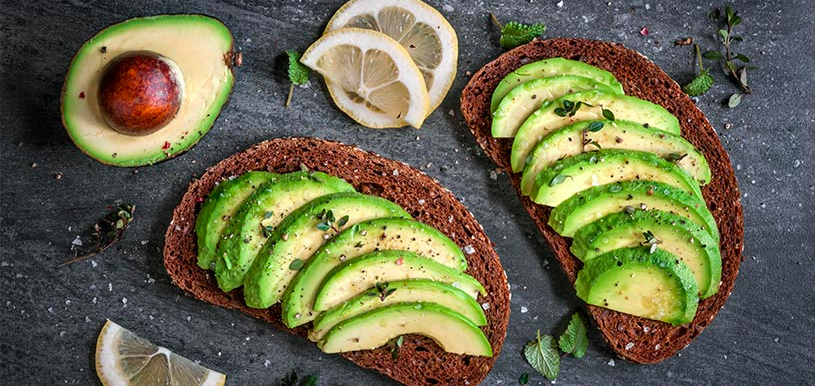Nausea and vomiting during pregnancy is referred to as morning sickness, although this is a very misleading term. Many women experience nausea and vomiting at any time of day and night. Not only does it affect daily life but it can also be very frustrating for mums that just want to eat nourishing foods for the health of their growing baby.
This is one of the most common complaints during pregnancy, with approximately four out of five women experiencing nausea and vomiting.
The good news is, that most often nausea only occurs during the first trimester and then gradually eases up after this. For some women though, it can last a little longer (only 9% of women experience it past 20 weeks) and for a few unfortunate women, it can last the entire pregnancy.
Researchers are still trying to figure out the cause of nausea and vomiting during pregnancy. Some theories include hormone fluctuations (such as placental hormones), your body’s attempt to protect you from potentially contaminated or unsafe food (such as possible poisonous plants and rotten meat), Vitamin B deficiencies, low blood sugar or even thyroid health. One theory is that metabolites of your thyroid hormones are the cause of morning sickness and it really is just a sign that your thyroid is healthy. During pregnancy, your thyroid ramps up to shunt thyroid hormone to your baby for optimal development, so nausea may be a good sign that the pregnancy is tracking well. A small reassurance when you are feeling terrible!
Hyperemesis Gravidarum (HG) is an extreme form of morning sickness that causes severe nausea and vomiting throughout pregnancy. HG and morning sickness are very different conditions. HG typically includes very severe nausea and vomiting that leads to dehydration and can often require medication and sometimes hospitalisation.
Speak to your health care provider if you have nausea that lasts longer than the first four months, have severe vomiting or if you aren’t gaining any weight during pregnancy.
Strategies
Step number one to manage your morning sickness is to figure out what triggers it for you. Is it getting out of bed too quickly? Getting too hungry or overeating? Certain smells or flavours? Time of day? Once you have worked this out, you can start to put some strategies in place.
1. If you feel unwell first thing in the morning, keep a snack in your bedside table. A good one to try is salted cashews and dried cranberries or cherries, as often salty and/or sour foods can help. The general advice is to have crackers before getting out of bed but I find the blood sugar spike and subsequent dip can make you feel worse throughout the day.
2. Eat smaller, more frequent snacks throughout the day as opposed to large meals. I know everyone says this but it really does help!!
Although you might not feel like it, try to eat protein upon waking and then every 2-3 hours. If you can stomach it, scrambled eggs with sea salt can be an excellent breakfast to help combat morning sickness and keep blood sugars stable throughout the day, reducing overall nausea. Remember, an empty stomach triggers nausea. Even if you don’t feel like eating, try to get a small snack in every couple of hours, which may only be a few almonds or spoonfuls of Greek yoghurt but it is better than nothing.
Some snacks that may help include:
o Greek yoghurt with a drizzle of honey and some berries
o Crackers and cheese
o Cold fruit (add a few salted nuts here for a bit more staying power if you can)
o Handful of salted cashews with dried sour cherries
o Cold carrot sticks with dip
3. If you are having trouble stomaching any food at all, try foods that are easily digested like fruit, smoothies, rice or roasted or mashed sweet potatoes. Although these are carbohydrates and is therefore contrary to the point above, sometimes all you can eat IS carbohydrate foods. Once you start to tolerate small amounts of these foods, try to follow it with some protein of fat-containing foods like avocado, Greek yoghurt or scrambled eggs.
4. Try liquid meals like smoothies or protein shakes. Often these can be better tolerated than solid food. If you do choose to use a protein powder, look for one that unsweetened and has minimal ingredients. For example, it may contain grass-fed whey protein, vanilla bean and stevia. Blend this up with yoghurt, ice and one cup of your fruit of choice for flavour.
5. Try having ginger to alleviate nausea. My favourite drink when I had nausea during pregnancy was Bragg’s Apple Cider Vinegar Ginger Spice drink! It contains Pure Distilled water, organic ACV, Organic ginger and organic stevia extract. You could also have ginger in a green smoothie or juice, ginger tea, hard candied ginger or supplement with one gram per day.
6. Salty, sour or cold foods can often help to mitigate nausea. Some options might include iced lemon water, icy poles made with fresh citrus fruit (homemade are the best option), avocado on toast with salt and lemon or simply cold watermelon.
7. Avoid spicy or fatty foods such as deep fried food as these can exacerbate nausea.
8. Always take your prenatal supplement with food as it can make you feel extremely nauseous on an empty stomach. It is often recommended to take your prenatal at night to avoid nausea, however, I personally found that taking B vitamins at night gave me a restless sleep and the B6 in your prenatal could be useful for nausea during the day. See tip number 8 below.
9. Vitamin B6 supplementation may help pregnancy nausea. It is recommended to take 25mg three times per day, with meals. In addition, you can trying eating more foods high in Vitamin B6 including avocado, bananas, sunflower seeds or pistachios. Foods also high in B6 but often not very appetising when you are suffering nausea are meat, poultry and fish.
10. Magnesium deficiency may also be associated with nausea. Try a magnesium supplement before bed for additional magnesium. It may also help with restless legs and improve sleep quality. Look for a magnesium glycinate supplement as this is the most readily absorbed with no gastrointestinal upset.
I know it might feel like nothing with help when you have constant nausea but just a few small tweaks can make a huge difference. If you do throw up, ensure you replenish lost fluids and electrolytes with things like coconut water, diluted juices or make your own electrolyte water with lemon juice and sea salt.
Hang in there mumma, it will pass!
If you need additional support, please contact me at jo@joguy.com.au


